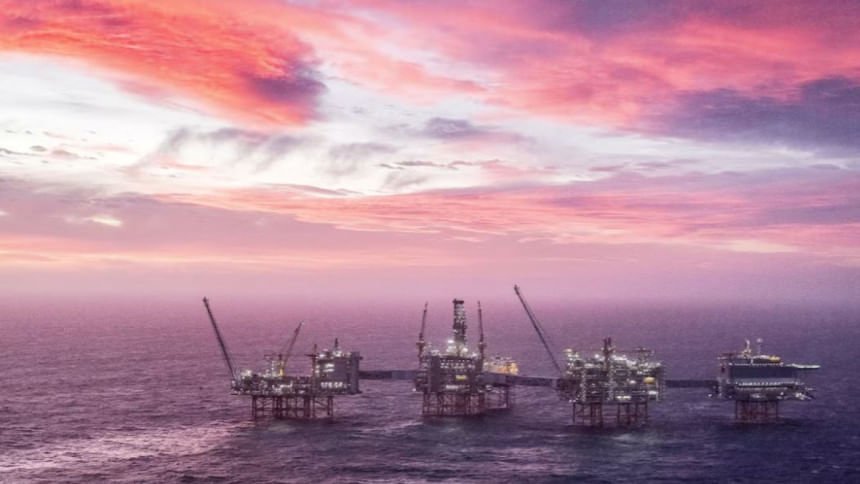In today’s world, energy has evolved beyond a mere commodity to become a source of power, influence, and a key driver of militarization. With the global economy heavily dependent on resources like oil, gas, and critical minerals, countries are increasingly leveraging military force to secure energy access, protect transit routes, and assert control over regions rich in resources. This intersection of energy politics and militarization has turned various terrains such as oceans, deserts, and mountains into hotly contested zones, where military presence or the threat thereof has become a permanent fixture on the global energy landscape.
A foundational understanding of this phenomenon can be traced back to Michael Klare’s seminal work, “Resource Wars: The New Landscape of Global Conflict.” Klare posits that the competition to control vital resources, particularly oil, is a significant driver of international conflicts and military engagements. Over time, this thesis has proven prescient, evident in examples ranging from the US naval operations in the Persian Gulf to Russia’s militarized pipelines in Ukraine, showcasing how energy security is increasingly enforced through military means.
One of the most illustrative examples highlighting the nexus between energy and militarization is the Strait of Hormuz. Serving as a crucial waterway through which approximately 20% of the world’s oil shipments pass, this strategic chokepoint has been a focal point of US military presence for decades. The positioning of the American Fifth Fleet in Bahrain is primarily aimed at safeguarding this vital oil conduit. Daniel Yergin’s account in “The Prize” recounts the Carter Doctrine of 1980, which unequivocally stated the readiness to repel any attempts to control the Persian Gulf using military force if necessary. Subsequently, US interventions in Kuwait (1991) and Iraq (2003), along with the maintenance of bases in Qatar and Saudi Arabia, have been justified under the broader umbrella of ensuring energy security.
On the opposite side of the strait, Iran has responded with its own military demonstrations, with the Revolutionary Guard regularly conducting naval exercises to underscore its strategic influence over oil transit. The escalations in this region are not rooted in ideological differences but rather revolve around the control of oil resources and geopolitical leverage.
The Russian Federation provides another compelling case study of the synergy between energy assets and military capabilities. In “Energy Empire: Oil, Gas and Russia’s Revival,” Fiona Hill and Clifford Gaddy delve into how Moscow has integrated its energy resources with military might to project power on the global stage. The 2008 invasion of Georgia by Russia, for instance, aimed at controlling transit routes that bypassed Russian territory, notably the Baku-Tbilisi-Ceyhan pipeline. Similarly, the annexation of Crimea in 2014 bolstered Russia’s control over the Black Sea, a critical region for offshore gas development and naval operations.
Even recent conflicts like the war in Ukraine in 2022 are intricately tied to energy considerations. As highlighted by Thane Gustafson in “Wheel of Fortune: The Battle for Oil and Power in Russia,” pipelines traversing Ukraine are not just infrastructural elements but significant geopolitical tools. Russia’s instrumental use of energy as a strategic weapon is underpinned by a blend of conventional military tactics, missile deployments, and hybrid warfare strategies, with Gazprom’s pipelines strategically positioned and heavily guarded.
China, as the largest global energy importer, has pursued a distinctive approach by intertwining infrastructure development with military expansion. The Belt and Road Initiative (BRI), as discussed by Zha Daojiong in “China’s Energy Security: Domestic and International Issues,” is deeply entwined with energy-centric motives. Projects such as pipelines in Myanmar, gas terminals in Pakistan, and refineries across Africa are integral components of a comprehensive strategy aimed at diversifying energy supply routes away from vulnerable points like the Strait of Malacca.
In safeguarding these extensive energy investments, China has significantly expanded its military footprint. Initiatives such as the construction of the Djibouti naval base, militarization of artificial islands in the South China Sea, and joint military exercises in the Indian Ocean are not isolated actions but are rooted in a broader energy security doctrine. Lyle Goldstein’s argument in “Meeting China Halfway” underscores the direct link between China’s naval expansion and the imperative to ensure uninterrupted energy flows from foreign suppliers.
The South China Sea, a region with significant hydrocarbon potential, is a focal point of energy and military maneuvering. While estimates vary, the sea is believed to harbor substantial undersea energy reserves. China’s assertion of the Nine-Dash Line is not solely a matter of national pride but forms a critical component of its energy calculus. Each deployment of an oil rig or naval patrol signifies a strategic step in the region’s militarization driven by energy imperatives.
The energy renaissance in the US, propelled by technologies like hydraulic fracturing and horizontal drilling, has reshaped its global military strategy. As outlined by Meghan O’Sullivan in “Windfall: How the New

